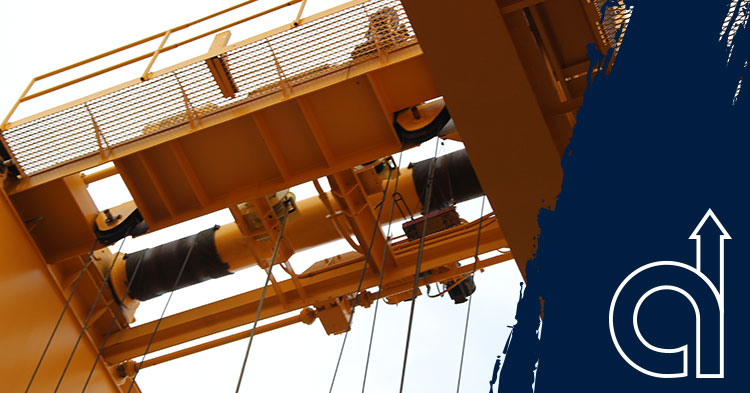In the crane and material handling industry, precise communication and a clear understanding of technical terms are essential for safe operations, regulatory compliance and effective equipment selection. Whether you’re an operator, technician, engineer or facility manager, knowing the correct terminology helps streamline workflows, improve safety measures and ensure that the right equipment is used for the right application.
Crane Components and Structures
- Bridge – Horizontal structure that supports the trolley and moves along the runway.
- Bridge Girder – Main beam of the bridge supporting the trolley.
- End Truck – Supports the bridge girders and enables movement along the runway.
- Runway – Tracks and supporting structure for crane movement.
- Trolley – Carries the hoist and moves along the bridge.
- Box Section – Rectangular steel structural component added for strength.
- End Tie – Connects girder ends for alignment.
- Span – Distance between runway rail centers.
Hoisting and Lifting Mechanisms
- Hoist – Lifts and lowers loads.
- Auxiliary Hoist – Secondary hoist for lighter loads at higher speeds.
- Load Block – Assembly with hook, sheaves, and frame.
- Hook Approach – Minimum distance between hook center and nearest obstruction.
- Lift – Maximum vertical hook movement range.
- Reeving – Path of hoist rope through sheaves.
Crane Motion and Control Systems
- Adjustable Frequency Drive (AFD) – Regulates AC motor speed efficiently.
- Flux Vector Drive – Precisely controls motor speed and torque.
- Regenerative Braking – Converts excess energy into usable power.
- Holding Brake – Engages automatically to hold loads when power is lost.
- Festooning – Cable system supplying power to a moving hoist.
- Gage – Distance between trolley rail centerlines.
Safety and Specialized Features
- Anti-Collision System – Prevents cane collisions.
- Anti-Skewing – Maintains crane alignment on the runway.
- Single Failure Proof – Ensures one component failure does not cause load loss.
- Explosion-Proof Crane – Prevents ignition in hazardous areas.
- Cask Handling Crane – Handles spent nuclear fuel casks safely.
- Two Blocking – Hazard where the load block jams against the structure.
Crane Types and Configurations
- Single Girder Crane – One bridge girder.
- Double Girder Crane – Two girders for heavier loads.
- Top Running Crane – Moves on rails atop the runway.
- Under Running Crane – Moves along runway beam flanges.
- Gantry Crane – Bridge supported by legs on a fixed track.
- Jib Crane – Rotating horizontal arm on a fixed base.
- Overhead Crane – Moves along a fixed overhead structure.
Load Handling and Capacity
- Capacity – Maximum lift weight.
- Critical Load – Load loss would compromise safety or operations.
- Rated Load – Safe maximum weight.
- Wheel Load – Force exerted on a wheel when fully loaded.
- Wheelbase – Distance between wheel centers along the rail.
For a more comprehensive list of industry terms and definitions, explore our Crane Glossary, where we break down essential terms to help you navigate the world of cranes and material handling with confidence.
Get Expert Assistance from American Crane
At American Crane & Equipment Corporation, we are committed to providing expert insights and industry-leading solutions. Whether you’re looking for the latest innovations, compliance guidelines, or best practices in crane manufacturing, our Resource Page offers a wealth of information to help you stay informed.
Whether you need custom cranes, replacement parts, or expert advice, we’re here to help. Contact us today or request a quote to get started!


